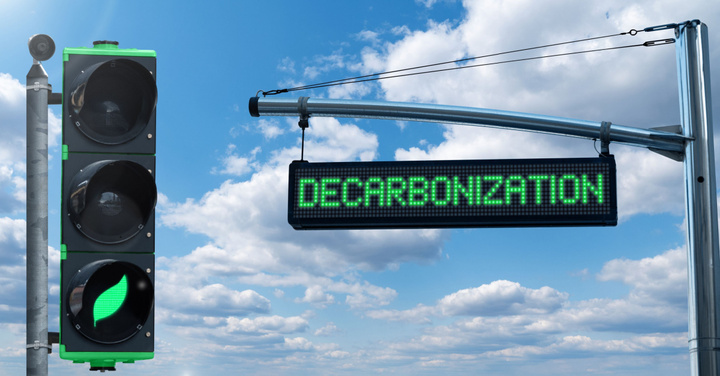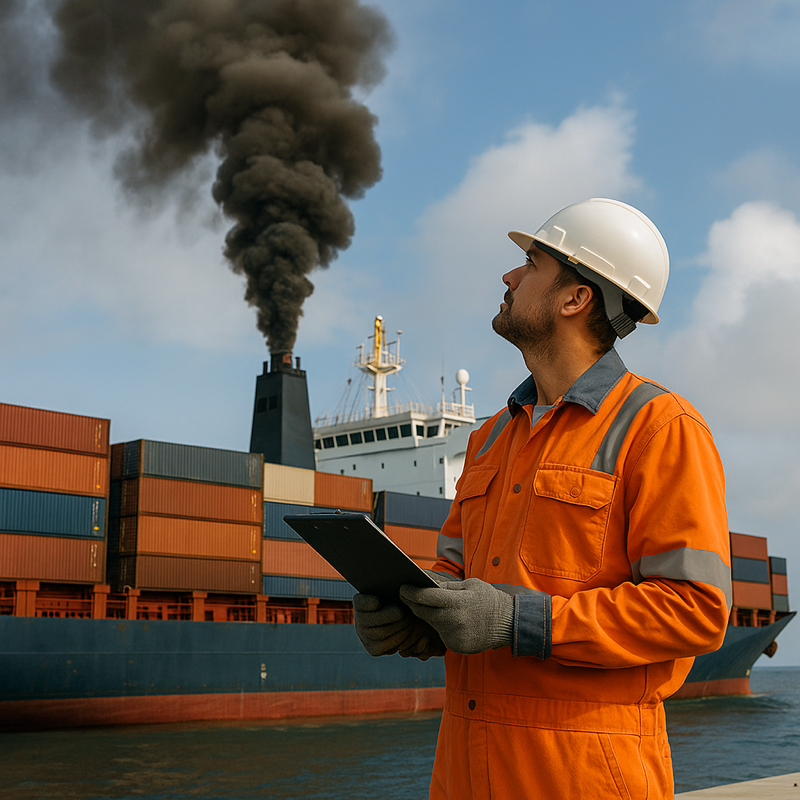It’s never been easier for businesses to build supply chains and connect with consumers on a global scale. Still, it has come at a cost that organizations worldwide are beginning to realize—the cost to the environment. For many companies, outsourced logistics accounts for their most significant source of Scope 3 emissions (indirect emissions from an organization’s value chain), and it has become necessary for companies to prioritize decarbonization strategies with a concerted effort. The consequences range from penalties due to non-compliance with regulations to a negative brand image to a worsening outlook for the environment.
This article looks at the strategies of decarbonization and how decarbonization is vital for building a sustainable future and should be a part of every business’s ESG (Environmental, Social, and Governance) goals.
Understanding Decarbonization in Logistics
Decarbonization—the process of reducing or eliminating carbon dioxide and other greenhouse gas emissions—has significant potential within the logistics and transportation sector due to the large number of emissions in this category. Businesses can employ a variety of strategies to effectively reduce their carbon footprint. In the transportation category, strategies might involve reducing empty miles, optimizing fuel efficiency routes, and consolidating shipments to reduce the number of trucks on the road. Using sustainable packaging—whether recyclable, biodegradable, sustainably sourced, or otherwise environmentally friendly—helps support decarbonization efforts.
Ocean freight shippers can also make sourcing decisions for decarbonization by selecting the greenest option among available vessels. Data on vessel efficiency and emissions can help shippers make informed decisions when choosing their shipping options. This allows them to build more sustainable global supply chains, which can come with the added benefits of improved operational efficiency and even reduced costs.
Decarbonization in Logistics vs. Traditional Carbon Reduction Measures
Carbon offsetting is a common method to reduce net carbon emissions, but it is not enough. Carbon offsetting involves investing in decreasing emissions in areas unrelated to the company’s value chain, for example, by planting trees or helping a community adopt more sustainable practices. This does have a role in helping the environment, but it does not address the root of the problem—practices producing high carbon emissions.
Decarbonization, on the other hand, involves taking proactive steps directly within the value chain and choosing sustainable options within their decision-making processes. By doing so, companies can address the source of their carbon emissions and more meaningfully reduce their environmental impact. To truly make a difference, companies must prioritize decarbonization efforts over traditional approaches with a lesser effect on the big-picture goals of sustainability.
Why Decarbonization in Logistics Matters
Decarbonization in logistics is growing as businesses recognize the critical need to reduce their carbon footprint and slow climate change. Not only is it helpful for the environment, but companies can also improve their bottom line. This is because decarbonization often involves optimizing processes and reducing waste, which can lead to significant cost savings over time. Businesses prioritizing decarbonization can improve their reputation and attract environmentally conscious consumers, contributing to growth.
The environmental benefits mean that when every business does its part, we can operate with the sustainable practices necessary for creating a positive outlook for future generations. It is no longer a matter of going above and beyond. It’s a necessity if we’re going to be able to slow climate change. Businesses that prioritize decarbonization are recognizing their contribution to carbon emissions and their responsibility to improve for the good of everyone.
Innovative Decarbonization Technology for Ocean Freight Shipping
As the shipping industry looks to decarbonize, innovative technologies are emerging that have the potential to transform how goods are transported by sea. Two of these technologies for reducing emissions in ocean freight shipping are green ship technology and smart routing.
Green ship technology uses alternative fuels such as methanol and LNG, which emit significantly fewer greenhouse gases than traditional fossil fuels. In particular, methanol is a promising alternative due to its high energy content and lower carbon intensity. Meanwhile, LNG is already being used in some vessels, with estimates suggesting it could reduce greenhouse gas emissions by up to 23%. As demand for sustainability grows, more solutions will emerge and evolve into more accessible options for reducing emissions.
Smart routing involves using advanced routing technologies to optimize shipping routes based on a range of factors, including different port pairings and carriers’ historical carbon emissions data. By making the most efficient route choice, shippers and BCOs have a simple and effective method of reducing their carbon emissions. One study found that using smart routing technology could reduce emissions by up to 5% on average.
Using a variety of approaches, whether energy-efficient fuels or smarter routing decisions, the industry can move toward more sustainable supply chains.
Decarbonization Strategies for Logistics
Shippers may take a few different approaches to decarbonization. The following five categories summarize some of the most impactful ways they can reduce carbon emissions within their logistics and value chain.
Measure and Report Emissions
Before anything else, companies need to accurately track their carbon footprint to report their progress toward emissions reduction targets. This helps identify areas for improvement and increases transparency and accountability.
Optimize Supply Chain Design
On a large scale, the design of a company’s supply chain can significantly impact its carbon emissions. Optimizing the design of the supply chain can reduce transportation needs, for example, and provide options within the smaller scale decisions that prioritize efficiency and minimize the effect on the environment. Sustainable inventory management is one example of optimizing supply chain design. This involves making decisions on inventory and warehousing within the supply chain to support sustainable logistics.
Implement Efficient Technologies
Technology to promote efficient operations is another opportunity to significantly lower emissions in logistics operations. Solutions are available to help companies reduce waste, such as by consolidating shipments and implementing smart routing optimization, as mentioned for ocean freight shipping. Businesses can save on logistics and transportation costs through this added efficiency and reduce their carbon emissions simultaneously.
Invest in Renewable Energy
Investing in renewable energy sources, or using logistics providers that do, provides another approach to reducing carbon emissions. When logistics companies adopt renewable energy sources like electric vehicles, they lower their and their customers’ reliance on fossil fuels. This is an essential step, even outside logistics, for moving toward cleaner and more sustainable energy.
Collaborate with Green Partners
Working with environmentally conscious partners across the supply chain can provide several benefits. Since Scope 3 emissions are from operations outside the reporting company’s direct control, businesses heavily depend on the partners they choose to work with to be environmentally responsible. Collaborating with the right partners, such as trucking companies with the same values and technology providers of carbon emissions data for ocean freight procurement, like Searoutes, can promote sustainability across the entire supply chain.
Decarbonization in Logistics: A Key Element of a Sustainable Future
Decarbonization in logistics is a critical element for realizing a sustainable future. With the increasing demand for global supply chains and global trade, logistics operations have mainly gone unchecked until very recently. Yet, they offer significant potential, making decarbonization efforts in this sector essential for businesses to achieve their sustainability goals.
Some companies may focus solely on carbon offsetting and similar measures. However, a comprehensive approach is necessary for effective decarbonization in logistics. This approach should encompass accurate carbon emission measuring and reporting, intentional supply chain design, efficiency-increasing technologies, renewable energy sources, and collaboration with green partners. Companies implementing such strategies may reduce their carbon footprint, increase operational efficiency, and lower costs.
Take Action for a Greener Future in Logistics
To create a greener future, companies must consider the opportunity that decarbonization strategies offer. Businesses that embrace these strategies can contribute more positively to the environment, their bottom line, and global sustainability efforts. It’s time to take action and join the decarbonization movement.
Become a leader in sustainable logistics. Let’s decarbonize together for a cleaner, greener future. Contact Greenabl’s team today for assistance with your decarbonization journey.


